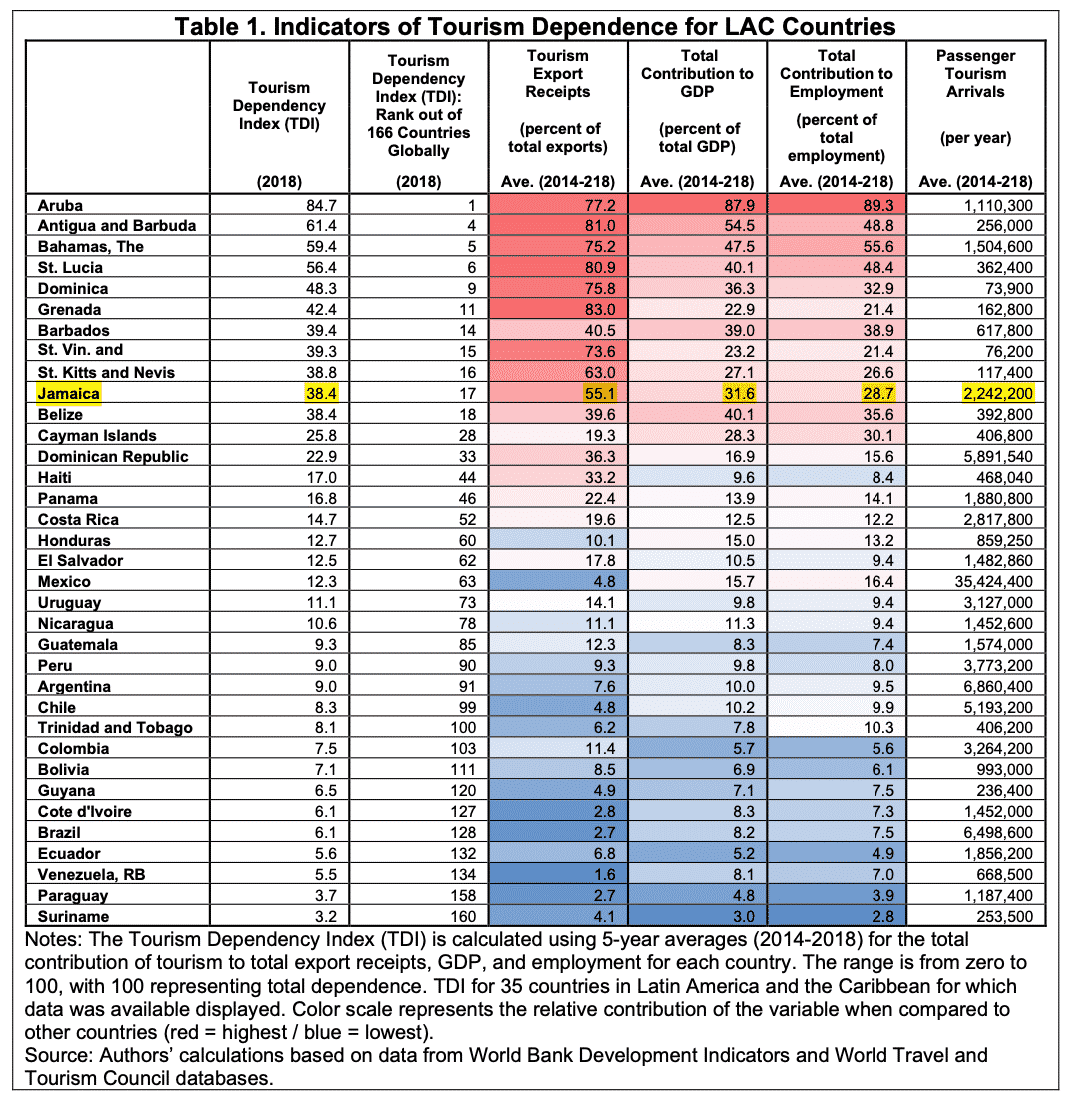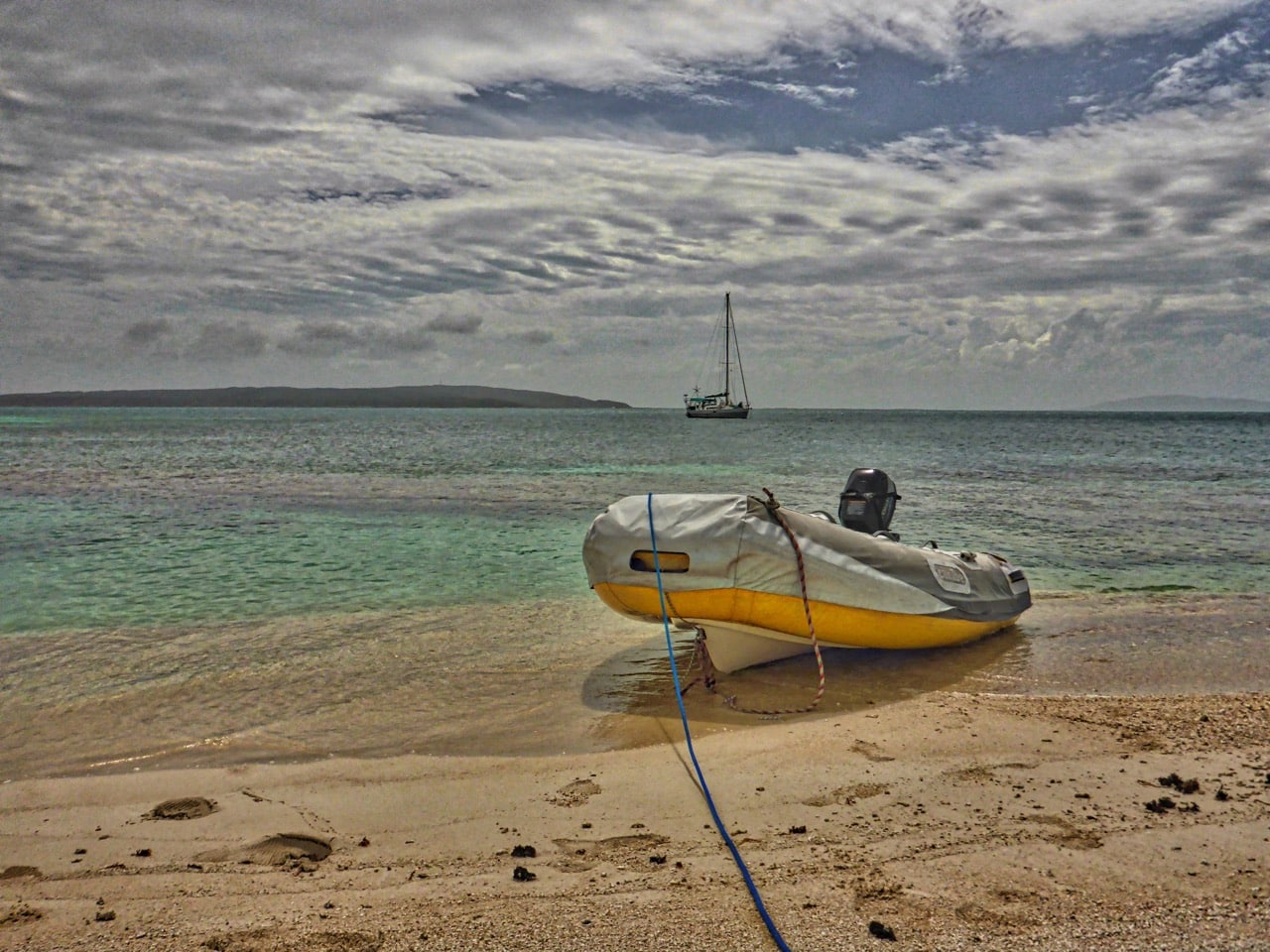Since the coronavirus keeps tourists at home, countries in the Caribbean region have to expect an economic decline in tourism. A new report (Extreme Outlier: The Pandemic’s Unprecedented Shock to Tourism in Latin America and the Caribbean) by the Inter-American Development Bank (IDB) on Wednesday, July 1, 2020 estimates that some of the most tourism-dependent economies in Latin America and the Caribbean could shrink by up to 19% (for Aruba) as fewer cruise ships, business traveller’s and student backpackers travel to the region.
The Caribbean destinations of Aruba, Antigua and Barbuda, the Bahamas, St Lucia and Dominica are among the 10 most tourism dependent countries in the world…
but what is the outlook for Jamaica?



Devastating impact
The COVID 19 crisis will have a devastating impact on countries around the world – especially economies dependent on tourism. The IDB report highlights the vulnerability of many Latin American and Caribbean countries, which are among the world’s most tourism-dependent countries. Shock simulations applied to tourism sector activities are used to show how the pandemic could have potentially damaging effects on production, employment, and the international balance of payments throughout the region.
Tourism Dependency Index
The IDB report introduces a Tourism Dependency Index (TDI). The TDI calculates using five-year averages (2014 to 2018) of tourism’s contribution to total export earnings, production as a share of real gross domestic product (GDP), and employment as a share of total national employment.
The range is from zero to 100, where 100 represents the total dependence on the sector.
Jamaica
Jamaica is among the 20 most dependent countries, actually, position 17 (out of 166 countries) with an index of 38.4 (like Belize).
In Jamaica, the total contribution of tourism to the GDP was 31.6 percent, the total contribution to employment was 28.7 percent. In the period 2014 – 2018, more than 2.2 million tourists arrived on the island on average (2.242,200).


Shocks in the last two decades
There have been several shocks over the past two decades that have probably affected tourism.
(1) the 9/11 attacks (September 2001);
(2) the outbreak of Severe Acute Respiratory Syndrome (SARS) (November 2002 to July 2003);
(3) the global financial crisis (December 2007 to June 2009);
(4) the H1N1 2009 influenza pandemic (January 2009 to August 2010);
(5) the Ebola outbreak (December 2013 to June 2016); and
(6) the Zika outbreak (April 2015 to November 2016).
Although these six shock episodes differ in nature, origin, and duration, they all had some impact on global travel and tourism flows. A noticeable decline in Latin America flows, and the Caribbean as a whole was observed only during the global financial crisis.
The almost complete closure of both passenger air transport and cruise shipping from March 2020 would mean a much higher shock to tourist arrivals and related revenues in 2020 and perhaps beyond. The COVID-19 crisis implications for tourism is an extreme outlier compared to all available historical data.

Three different shock scenarios
The IDB report defines three different shock scenarios reflecting possible recovery paths for tourism. These three scenarios assume that the first quarter of 2020 was largely uninterrupted and estimated different recovery levels. The scenarios do not discuss effects on other sectors or other implications.
Impact on External Earnings, Employment and GDP
Click on table to enlarge

The magnitude of the shocks
The magnitude of the shocks ranges from a loss of 19 to 13 percentage points in real GDP compared to pre-crisis expectations for Aruba and the Bahamas.
Another critical dimension of the external shock to tourism concerns financial flows related to the balance of payments. The magnitude of these simulated shocks is substantial, with highly dependent countries possibly facing significant losses in export earnings, often much more extensive than historical, current account balances, even under the least severe scenarios.
Shock scenarios: Impact for Jamaica
The shock scenarios for Jamaica shows that the country is “in the upper middle field in the three categories.” That means the shock impact will be more severe than for the most other countries in the region, but not as problematic as it is for some other Caribbean countries. Jamaica’s worst scenario: Impact of COVID-19 on GDP is still better than the best one for the Bahamas. That is still too little to rest. The effects will also be significant for Jamaica.
In a blog article I express my personal view and will make some proposal what we can do prepare the ground for the resumption of activities

Significant adjustments are necessary.
The IDB report indicates that the crisis will force many countries dependent on tourism to make significant adjustments to their trade and financial transactions and their relations with international partners.
Zanny Minton Beddoes, editor-in-chief of The Economist states in a short video (6:14/10:05 min):
“In the toughest positions are emerging economies, whose exports have been hit, relying on tourism and have a very big debt burden.”
In summary, the IDB report shows that some countries in the LAC region are among the most dependent on international tourism in terms of production, employment, and export earnings.
As the authors state, nothing can be done to replace or stimulate the demand for tourism in the short term. Governments can provide targeted and tailored support to preserve productive assets and compensate for the lost income of individuals working in the sector. Furthermore, the transition period could be used to prepare the ground for the resumption of activities in uncertain circumstances.


Some proposals for the CMU
This post is based on the press release of the IADB and information in the report. Highlights were made by the author.



